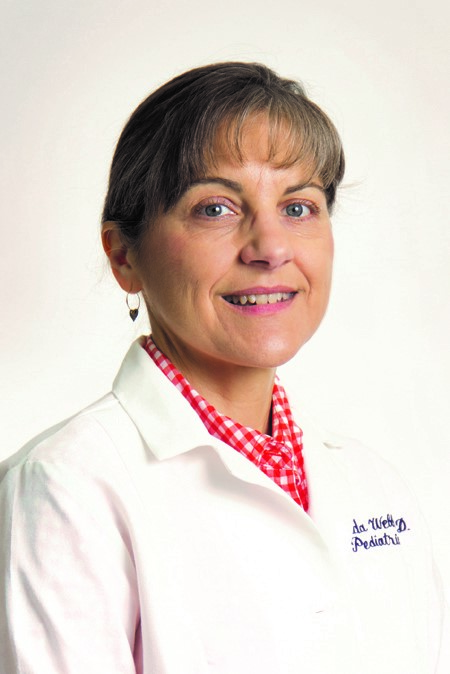by Malinda Webb, MD, FAAP

I am currently practicing General Pediatrics at Stillwater Pediatrics. I have been in Stillwater now for 22 years. My undergraduate degree was from OSU; my medical degree from OU College of Medicine. I completed my pediatric residency at the University of Arkansas for Medical Sciences in Little Rock. I stayed on as Chief Resident and then attending in the Newborn Nursery. While there, I was a member of one of the training programs through WellStart International in San Diego. This organization developed a comprehensive breastfeeding management training curriculum for all professionals involved in the care of breastfeeding moms and babies. I taught breastfeeding through the Newborn Nursery rotation and in conjunction with the Arkansas State Dept. of Health. After moving to Oklahoma, I was involved with the Breastfeeding Coalition and helped with many of the WIC and Health Department training programs. I have also served as your Chapter Breastfeeding Coordinator in the past.
After a hiatus from direct involvement at the State level, I needed to get “up to speed” on where we are and where we need to go regarding breastfeeding. The 7th Annual Summit on Becoming Baby Friendly in Oklahoma was held Feb. 22. Much information was given regarding our present State of the State and how to tackle the barriers to improving breastfeeding in Oklahoma.
Oklahoma is currently ranked 47th in the nation in overall health which is worse than the previous year. Our infant mortality rate is among the highest in the country at 7.4 infant deaths per 1000 live births. The rate among Black Oklahomans is 13.9 and Native Americans 9.7 according to 2018 statistics from the CDC. Breastfeeding rates are also low. The CDC data for babies born in 2015 shows that we are ranked 44th out of 50 in any breastfeeding with 75.9% of babies. With any breastfeeding at 6 month we are down to 49% which puts us at 45th. Exclusive breastfeeding at 3 months was at 44.2%. We actually do a little better on this one with a rank of 35th. Our rate on this measure has steadily been increasing over the last 10 years. Our rates are still lower than either Texas or Kansas, however. The lower the income level, the lower the breastfeeding rate throughout the country. This data comes from maternal recall at 19-35 months as part of an immunization survey so they are not perfect, but the best measure we currently have. The US Breastfeeding Committee publishes a saving calculator based on 5 maternal and 9 pediatric conditions/diseases that are impacted by breastfeeding. If we could increase the exclusive breastfeeding rate at 6 months to 80% in Oklahoma, we would prevent 28 maternal deaths and 9 child deaths as well as saving over $33 million in medical costs, $14 million in nonmedical costs.
With the large portion in our state who live in poverty (22%) and our unhealthy status, breastfeeding becomes an important part of the solution to improve the health of Oklahomans. Some of the barriers identified include inaccurate or no information given prenatally or at delivery and then lack of support in the hospital, clinic and workplace. It is my hope that we can address some of those issues in this column. Next issue we will discuss breastfeeding resources, but if you have other questions or issues, please do not hesitate to reach out to me at mowebb@stillwater-medical.org.
My thanks to Becky Mannel, MPH, IBCLC, FILCA, Clinical Assistant Professor, Dept of OB/GYN and Petra Colindres, MA, RD/LD, IBCLC at the OK Breastfeeding Resource Center for sharing their information and expertise.
